BAE System Bundle
Who Really Controls BAE Systems?
Unraveling the mystery of BAE System SWOT Analysis ownership is key to understanding its global influence. From its inception through pivotal mergers, BAE Systems' story is one of strategic evolution and shifting power dynamics. Understanding the company's ownership structure is crucial for investors, analysts, and anyone interested in the defense and aerospace sectors.
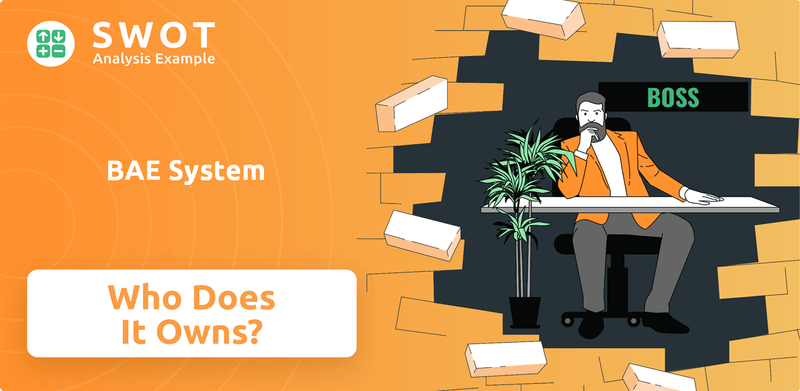
The question of 'Who owns BAE Systems?' goes beyond simple stock ownership; it delves into the heart of strategic decision-making and accountability. Knowing the BAE Systems shareholders and the BAE Systems parent company provides insights into its future direction. This analysis will explore the BAE Systems history, its major shareholders, and how these factors shape its role in the global defense landscape, including its relationship with the UK government, and its defense contracts.
Who Founded BAE System?
Understanding the ownership of BAE Systems begins with recognizing its unique formation. Unlike companies with individual founders, BAE Systems emerged from a significant merger in 1999, shaping its ownership structure from the outset. This history is crucial for tracing back the roots of who owns BAE Systems today.
The merger that created BAE Systems involved British Aerospace (BAe) and Marconi Electronic Systems (MES), a part of the General Electric Company (GEC) plc. Therefore, the initial ownership wasn't about specific founders but rather the shareholders of these pre-existing public entities. This complex beginning set the stage for BAE Systems as a major player in the defense and aerospace industry.
Tracing the BAE Systems ownership back to its origins reveals a corporate evolution rooted in mergers and acquisitions. British Aerospace itself was created through a series of mergers and nationalizations, while Marconi Electronic Systems was a well-established entity within GEC. The 1999 merger was a strategic move to create a global leader, with early ownership reflecting the shareholder bases of the merging companies.
Formed in 1999 from the merger of British Aerospace and Marconi Electronic Systems.
No specific founders with equity splits at the company's inception.
Initial ownership distributed among shareholders of British Aerospace and GEC.
The merger aimed to create a leading global defense and aerospace company.
BAE Systems was formed as a publicly traded company.
No angel investors or early backers in the traditional sense.
The formation of BAE Systems is a story of corporate consolidation, not individual founding. The company's origins lie in the merger of British Aerospace and Marconi Electronic Systems. Understanding the BAE Systems shareholders involves looking at the ownership structures of these pre-existing publicly traded companies. For a deeper dive into the strategic moves that shaped BAE Systems, consider reading about the Growth Strategy of BAE System.
- BAE Systems was formed through a merger, not with individual founders.
- The initial ownership was based on the existing shareholders of British Aerospace and GEC.
- The merger aimed to create a global leader in defense and aerospace.
- The company's history is critical to understanding its current ownership structure.
BAE System SWOT Analysis
- Complete SWOT Breakdown
- Fully Customizable
- Editable in Excel & Word
- Professional Formatting
- Investor-Ready Format
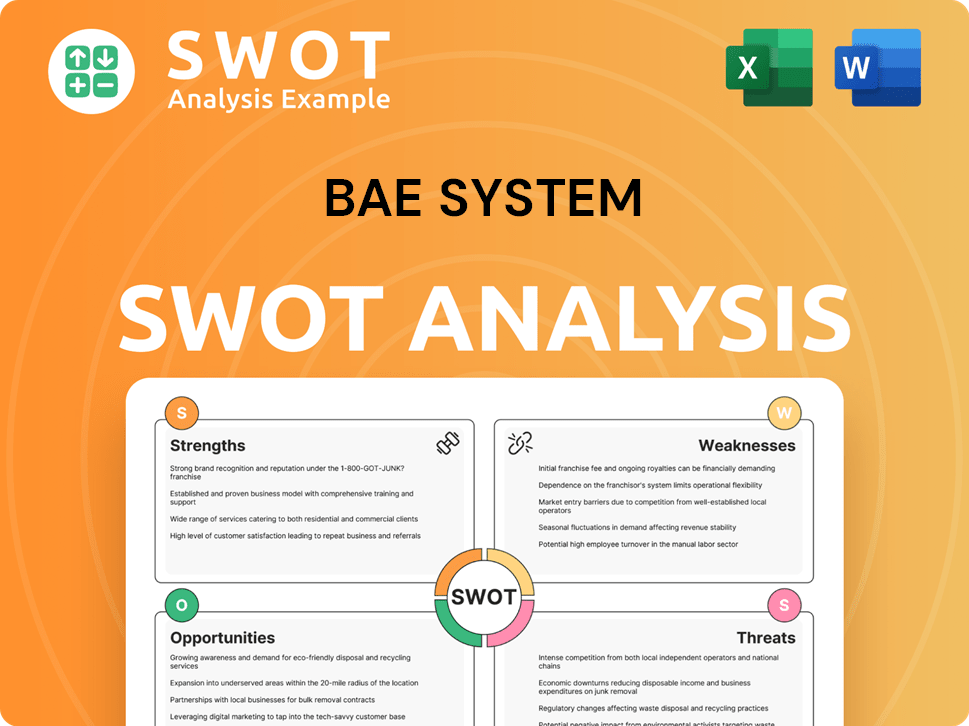
How Has BAE System’s Ownership Changed Over Time?
The ownership structure of BAE Systems, a publicly traded company, has evolved since its formation in 1999. The company's shares are available on the London Stock Exchange, leading to a diverse ownership base. The primary shifts in ownership have involved changes in major shareholdings rather than significant private investment rounds. Understanding BAE Systems ownership involves recognizing the influence of institutional investors, which form the majority of the company's shareholders.
As of early 2025, the ownership of BAE Systems is largely composed of institutional investors. These include mutual funds, pension funds, and asset managers. These entities hold significant portions of the company's outstanding shares. The major stakeholders play a crucial role in influencing company strategy and governance.
| Shareholder | Approximate % of Shares Held (March 2025) | Type of Investor |
|---|---|---|
| Capital Research Global Investors | Over 5% | Asset Management Firm |
| The Vanguard Group | Approximately 5% | Asset Management Firm |
| BlackRock | Approximately 4% | Asset Management Firm |
Major shareholders, such as Capital Research Global Investors, The Vanguard Group, and BlackRock, consistently hold significant stakes. These firms manage large portfolios and their holdings reflect broad market exposure and passive investment strategies. The influence of these institutional investors extends to company strategy and governance, including financial performance and ESG matters. Changes in ownership among these major players can signal market sentiment and impact strategic decision-making. To learn more about the company, you can read about the Growth Strategy of BAE System.
BAE Systems shareholders are primarily institutional investors. These investors include asset management firms, mutual funds, and pension funds.
- The ownership structure has evolved since 1999 when the company became publicly traded.
- Major shareholders include Capital Research Global Investors, The Vanguard Group, and BlackRock.
- Institutional investors influence company strategy and governance.
- Changes in ownership can signal market sentiment.
BAE System PESTLE Analysis
- Covers All 6 PESTLE Categories
- No Research Needed – Save Hours of Work
- Built by Experts, Trusted by Consultants
- Instant Download, Ready to Use
- 100% Editable, Fully Customizable
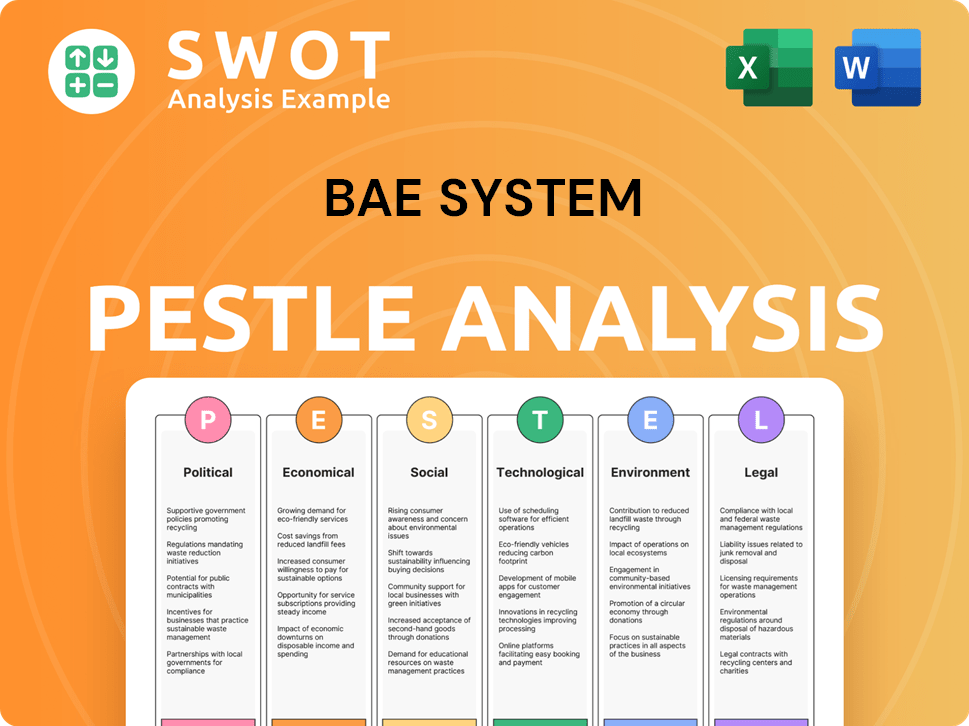
Who Sits on BAE System’s Board?
The Board of Directors of BAE Systems is pivotal in steering the company's strategic direction and ensuring effective governance. The board comprises executive directors, non-executive directors, and a Chairman, each playing a specific role in the oversight of the business. The structure is designed to balance industry expertise with independent oversight, aiming for robust governance practices. The board's composition as of early 2025 reflects a commitment to maintaining a diverse skill set and experience base to effectively manage the company's operations and strategic initiatives.
The voting power within BAE Systems is primarily determined by share ownership. As a publicly traded entity, BAE Systems operates under a one-share-one-vote system. This means that each ordinary share grants one vote, ensuring that voting rights in resolutions and board elections are directly proportional to the number of shares held. Institutional investors, such as Capital Research Global Investors, The Vanguard Group, and BlackRock, hold significant stakes and therefore wield considerable influence through their voting power during annual general meetings and other shareholder votes. The independent non-executive directors provide objective oversight and guidance, contributing to the company's commitment to transparency and accountability.
| Board Member | Role | Notes |
|---|---|---|
| Charles Woodburn | Chief Executive Officer | Leads the company's strategic direction and operational execution. |
| Sir Michael Ryan | Chairman | Oversees the board's activities and ensures effective governance. |
| Non-Executive Directors | Various | Provide independent oversight and expertise in areas such as finance, risk, and strategy. |
The governance of BAE Systems is guided by the UK Corporate Governance Code, which emphasizes transparency and the fair treatment of all shareholders. There are no indications of dual-class shares or special voting rights that would grant outsized control to specific individuals. The company's commitment to these principles is evident in its operational structure and its approach to shareholder relations. For more insights into the company's origins, you can check out Brief History of BAE System.
Understanding BAE Systems ownership structure is crucial for investors and stakeholders.
- Voting power is primarily determined by share ownership, with a one-share-one-vote system.
- Institutional investors hold significant stakes and influence voting outcomes.
- The Board of Directors includes a mix of executive and non-executive directors.
- The company adheres to the UK Corporate Governance Code, emphasizing transparency and fair treatment of shareholders.
BAE System Business Model Canvas
- Complete 9-Block Business Model Canvas
- Effortlessly Communicate Your Business Strategy
- Investor-Ready BMC Format
- 100% Editable and Customizable
- Clear and Structured Layout
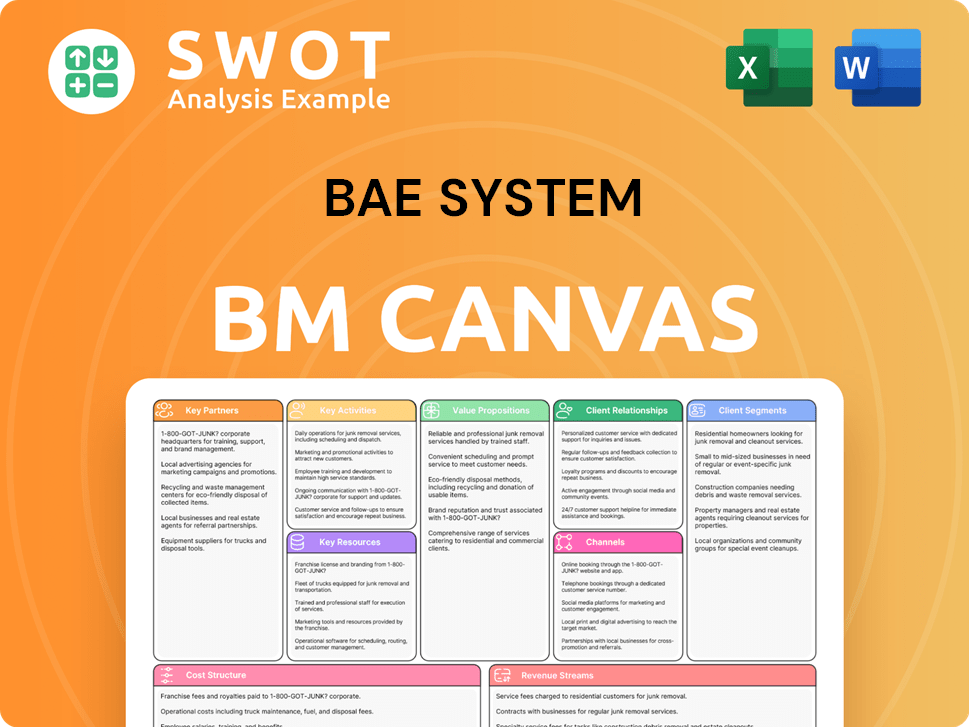
What Recent Changes Have Shaped BAE System’s Ownership Landscape?
Over the last few years (2022-2025), the ownership of BAE Systems has seen subtle shifts due to institutional investment trends and strategic corporate actions. While the fundamental ownership structure hasn't dramatically changed, several developments are worth noting. For instance, the acquisition of Ball Aerospace in 2024 for approximately $5.55 billion could influence share distribution, particularly if new shares were issued. Such large-scale mergers and acquisitions (M&A) can lead to short-term adjustments in institutional holdings as funds rebalance their portfolios. The company's robust financial performance in 2024, marked by strong order intake and sales, further solidified its attractiveness for long-term institutional holders.
Industry trends, like the increasing focus on ESG (Environmental, Social, and Governance) investing, indirectly influence BAE Systems. Major institutional investors are increasingly integrating ESG factors into their investment decisions, impacting their holdings in defense companies. BAE Systems, a significant player in the defense sector, faces increasing scrutiny from these investors regarding its sustainability and ethical governance efforts. There is a consistent trend of high institutional ownership, reflecting its status as a large-cap, publicly traded company. Consolidation within the defense industry could lead to future ownership changes as companies merge or acquire others, potentially altering BAE Systems' competitive landscape and investor appeal. Read about the Marketing Strategy of BAE System.
| Metric | Value | Year |
|---|---|---|
| Market Capitalization (Approximate) | $47 Billion | 2024 |
| Institutional Ownership (Approximate) | Over 60% | 2024 |
| Revenue (2024) | £25.2 billion | 2024 |
The major shareholders of BAE Systems are primarily institutional investors. These include investment management firms, pension funds, and other financial institutions that hold significant stakes in the company's stock. These large investors often have a long-term perspective on their investments.
Strategic acquisitions, like the Ball Aerospace purchase, can influence BAE Systems' shareholder base. These deals may lead to the issuance of new shares or changes in the company's market capitalization, potentially altering the composition of its investor base and attracting different investor segments.
ESG investing is becoming increasingly important. Institutional investors now consider environmental, social, and governance factors. This trend can influence their holdings in defense companies like BAE Systems, as investors assess the company's sustainability efforts and ethical practices.
Future changes in BAE Systems ownership could arise from industry consolidation, with mergers and acquisitions potentially reshaping the competitive landscape. Public statements and analyst reports primarily focus on operational performance, order backlogs, and strategic growth, rather than ownership changes.
BAE System Porter's Five Forces Analysis
- Covers All 5 Competitive Forces in Detail
- Structured for Consultants, Students, and Founders
- 100% Editable in Microsoft Word & Excel
- Instant Digital Download – Use Immediately
- Compatible with Mac & PC – Fully Unlocked
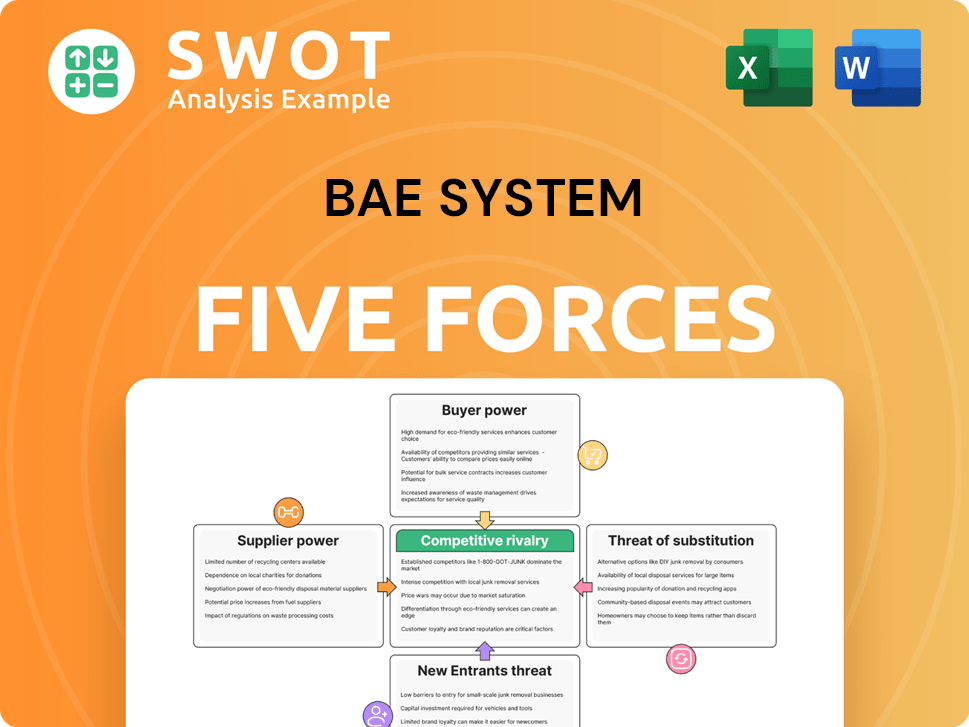
Related Blogs
- What are Mission Vision & Core Values of BAE System Company?
- What is Competitive Landscape of BAE System Company?
- What is Growth Strategy and Future Prospects of BAE System Company?
- How Does BAE System Company Work?
- What is Sales and Marketing Strategy of BAE System Company?
- What is Brief History of BAE System Company?
- What is Customer Demographics and Target Market of BAE System Company?
Disclaimer
All information, articles, and product details provided on this website are for general informational and educational purposes only. We do not claim any ownership over, nor do we intend to infringe upon, any trademarks, copyrights, logos, brand names, or other intellectual property mentioned or depicted on this site. Such intellectual property remains the property of its respective owners, and any references here are made solely for identification or informational purposes, without implying any affiliation, endorsement, or partnership.
We make no representations or warranties, express or implied, regarding the accuracy, completeness, or suitability of any content or products presented. Nothing on this website should be construed as legal, tax, investment, financial, medical, or other professional advice. In addition, no part of this site—including articles or product references—constitutes a solicitation, recommendation, endorsement, advertisement, or offer to buy or sell any securities, franchises, or other financial instruments, particularly in jurisdictions where such activity would be unlawful.
All content is of a general nature and may not address the specific circumstances of any individual or entity. It is not a substitute for professional advice or services. Any actions you take based on the information provided here are strictly at your own risk. You accept full responsibility for any decisions or outcomes arising from your use of this website and agree to release us from any liability in connection with your use of, or reliance upon, the content or products found herein.